Cover Page
In Praise of Computer Organization and Design: The Hardware/Software Interface, Revised Fourth Edition
Acknowledgments
Computer Organization and Design: The Hardware/Software Interface
Copyright Page
Dedication Page
Contents
Preface
About This Book
About the Other Book
Changes for the Fourth Edition
Instructor Support
Concluding Remarks
Acknowledgments for the Fourth Edition
1 Computer Abstractions and Technology
1.1 Introduction
Classes of Computing Applications and Their Characteristics
What You Can Learn in This Book
1.2 Below Your Program
From a High-Level Language to the Language of Hardware
1.3 Under the Covers
Anatomy of a Mouse
Through the Looking Glass
Opening the Box
A Safe Place for Data
Communicating with Other Computers
Technologies for Building Processors and Memory
1.4 Performance
Defining Performance
Measuring Performance
CPU Performance and Its Factors
Instruction Performance
The Classic CPU Performance Equation
1.5 The Power Wall
1.6 The Sea Change: The Switch from Uniprocessors to Multiprocessors
1.7 Real Stuff: Manufacturing and Benchmarking the AMD Opteron X4
SPEC CPU Benchmark
SPEC Power Benchmark
1.8 Fallacies and Pitfalls
1.9 Concluding Remarks
Road Map for This Book
1.10 Historical Perspective and Further Reading
1.11 Exercises
Exercise 1.1
Exercise 1.2
Exercise 1.3
Exercise 1.4
Exercise 1.5
Exercise 1.6
Exercise 1.7
Exercise 1.8
Exercise 1.9
Exercise 1.10
Exercise 1.11
Exercise 1.12
Exercise 1.13
Exercise 1.14
Exercise 1.15
Exercise 1.16
2 Instructions: Language of the Computer
2.1 Introduction
2.2 Operations of the Computer Hardware
2.3 Operands of the Computer Hardware
Memory Operands
Constant or Immediate Operands
2.4 Signed and Unsigned Numbers
Summary
2.5 Representing Instructions in the Computer
MIPS Fields
2.6 Logical Operations
2.7 Instructions for Making Decisions
Loops
Case/Switch Statement
2.8 Supporting Procedures in Computer Hardware
Using More Registers
Nested Procedures
Allocating Space for New Data on the Stack
Allocating Space for New Data on the Heap
2.9 Communicating with People
Characters and Strings in Java
2.10 MIPS Addressing for 32-Bit Immediates and Addresses
32-Bit Immediate Operands
Addressing in Branches and Jumps
MIPS Addressing Mode Summary
Decoding Machine Language
2.11 Parallelism and Instructions: Synchronization
2.12 Translating and Starting a Program
Compiler
Assembler
Linker
Loader
Dynamically Linked Libraries
Starting a Java Program
2.13 A C Sort Example to Put It All Together
The Procedure swap
Register Allocation for swap
Code for the Body of the Procedure swap
The Full swap Procedure
The Procedure sort
Register Allocation for sort
Code for the Body of the Procedure sort
The Procedure Call in sort
Passing Parameters in sort
Preserving Registers in sort
The Full Procedure sort
2.14 Arrays versus Pointers
Array Version of Clear
Pointer Version of Clear
Comparing the Two Versions of Clear
2.15 Advanced Material: Compiling C and Interpreting Java
2.16 Real Stuff: ARM Instructions
Addressing Modes
Compare and Conditional Branch
Unique Features of ARM
2.17 Real Stuff: x86 Instructions
Evolution of the Intel x86
x86 Registers and Data Addressing Modes
x86 Integer Operations
x86 Instruction Encoding
x86 Conclusion
2.18 Fallacies and Pitfalls
2.19 Concluding Remarks
2.20 Historical Perspective and Further Reading
2.21 Exercises
Exercise 2.1
Exercise 2.2
Exercise 2.3
Exercise 2.4
Exercise 2.5
Exercise 2.6
Exercise 2.7
Exercise 2.8
Exercise 2.9
Exercise 2.10
Exercise 2.11
Exercise 2.12
Exercise 2.13
Exercise 2.14
Exercise 2.15
Exercise 2.16
Exercise 2.17
Exercise 2.18
Exercise 2.19
Exercise 2.20
Exercise 2.21
Exercise 2.22
Exercise 2.23
Exercise 2.24
Exercise 2.25
Exercise 2.26
Exercise 2.27
Exercise 2.28
Exercise 2.29
Exercise 2.30
Exercise 2.31
Exercise 2.32
Exercise 2.33
Exercise 2.34
Exercise 2.35
Exercise 2.36
Exercise 2.37
Exercise 2.38
Exercise 2.39
Exercise 2.40
3 Arithmetic for Computers
3.1 Introduction
3.2 Addition and Subtraction
Arithmetic for Multimedia
Summary
3.3 Multiplication
Sequential Version of the Multiplication Algorithmand Hardware
Signed Multiplication
Faster Multiplication
Multiply in MIPS
Summary
3.4 Division
A Division Algorithm and Hardware
Signed Division
Faster Division
Divide in MIPS
Summary
3.5 Floating Point
Floating-Point Representation
Floating-Point Addition
Floating-Point Multiplication
Floating-Point Instructions in MIPS
Accurate Arithmetic
Summary
3.6 Parallelism and Computer Arithmetic: Associativity
3.7 Real Stuff: Floating Point in the x86
The x86 Floating-Point Architecture
The Intel Streaming SIMD Extension 2 (SSE2)Floating-Point Architecture
3.8 Fallacies and Pitfalls
3.9 Concluding Remarks
3.10 Historical Perspective and Further Reading
3.11 Exercises
Exercise 3.1
Exercise 3.2
Exercise 3.3
Exercise 3.4
Exercise 3.5
Exercise 3.6
Exercise 3.7
Exercise 3.8
Exercise 3.9
Exercise 3.10
Exercise 3.11
Exercise 3.12
Exercise 3.13
Exercise 3.14
Exercise 3.15
4 The Processor
4.1 Introduction
A Basic MIPS Implementation
An Overview of the Implementation
4.2 Logic Design Conventions
Clocking Methodology
4.3 Building a Datapath
Creating a Single Datapath
4.4 A Simple Implementation Scheme
The ALU Control
Designing the Main Control Unit
Operation of the Datapath
Finalizing Control
Why a Single-Cycle Implementation Is Not Used Today
4.5 An Overview of Pipelining
Designing Instruction Sets for Pipelining
Pipeline Hazards
Structural Hazards
Data Hazards
Control Hazards
Pipeline Overview Summary
4.6 Pipelined Datapath and Control
Graphically Representing Pipelines
Pipelined Control
4.7 Data Hazards: Forwarding versus Stalling
Data Hazards and Stalls
4.8 Control Hazards
Assume Branch Not Taken
Reducing the Delay of Branches
Dynamic Branch Prediction
Pipeline Summary
4.9 Exceptions
How Exceptions Are Handled in the MIPS Architecture
Exceptions in a Pipelined Implementation
4.10 Parallelism and Advanced Instruction-Level Parallelism
The Concept of Speculation
Static Multiple Issue
An Example: Static Multiple Issue with the MIPS ISA
Dynamic Multiple-Issue Processors
Dynamic Pipeline Scheduling
Power Efficiency and Advanced Pipelining
4.11 Real Stuff: the AMD Opteron X4 (Barcelona) Pipeline
4.12 Advanced Topic: an Introduction to Digital Design Using a Hardware Design Language to Describe and Model a Pipeline and More Pipelining Illustrations
4.13 Fallacies and Pitfalls
4.14 Concluding Remarks
4.15 Historical Perspective and Further Reading
4.16 Exercises
Exercise 4.1
Exercise 4.2
Exercise 4.3
Exercise 4.4
Exercise 4.5
Exercise 4.6
Exercise 4.7
Exercise 4.8
Exercise 4.9
Exercise 4.10
Exercise 4.11
Exercise 4.12
Exercise 4.13
Exercise 4.14
Exercise 4.15
Exercise 4.16
Exercise 4.17
Exercise 4.18
Exercise 4.19
Exercise 4.20
Exercise 4.21
Exercise 4.22
Exercise 4.23
Exercise 4.24
Exercise 4.25
Exercise 4.26
Exercise 4.27
Exercise 4.28
Exercise 4.29
Exercise 4.30
Exercise 4.31
Exercise 4.32
Exercise 4.33
Exercise 4.34
Exercise 4.35
Exercise 4.36
Exercise 4.37
Exercise 4.38
Exercise 4.39
5 Large and Fast: Exploiting Memory Hierarchy
5.1 Introduction
5.2 The Basics of Caches
Accessing a Cache
Handling Cache Misses
Handling Writes
An Example Cache: The Intrinsity FastMATH Processor
Designing the Memory System to Support Caches
Summary
5.3 Measuring and Improving Cache Performance
Reducing Cache Misses by More Flexible Placement of Blocks
Locating a Block in the Cache
Choosing Which Block to Replace
Reducing the Miss Penalty Using Multilevel Caches
Summary
5.4 Virtual Memory
Placing a Page and Finding It Again
Page Faults
What about Writes?
Making Address Translation Fast: the TLB
The Intrinsity FastMATH TLB
Integrating Virtual Memory, TLBs, and Caches
Implementing Protection with Virtual Memory
Handling TLB Misses and Page Faults
Summary
5.5 A Common Framework for Memory Hierarchies
Question 1: Where Can a Block Be Placed?
Question 2: How Is a Block Found?
Question 3: Which Block Should Be Replaced on a Cache Miss?
Question 4: What Happens on a Write?
The Three Cs: An Intuitive Model for Understanding the Behavior of Memory Hierarchies
5.6 Virtual Machines
Requirements of a Virtual Machine Monitor
(Lack of) Instruction Set Architecture Support for Virtual Machines
Protection and Instruction Set Architecture
5.7 Using a Finite-State Machine to Control a Simple Cache
A Simple Cache
Finite-State Machines
FSM for a Simple Cache Controller
5.8 Parallelism and Memory Hierarchies: Cache Coherence
Basic Schemes for Enforcing Coherence
Snooping Protocols
5.9 Advanced Material: Implementing Cache Controllers
5.10 Real Stuff: the AMD Opteron X4 (Barcelona) and Intel Nehalem Memory Hierarchies
The Memory Hierarchies of the Nehalem and Opteron
Techniques to Reduce Miss Penalties
5.11 Fallacies and Pitfalls
5.12 Concluding Remarks
5.13 Historical Perspective and Further Reading
5.14 Exercises
Exercise 5.1
Exercise 5.2
Exercise 5.3
Exercise 5.4
Exercise 5.5
Exercise 5.6
Exercise 5.7
Exercise 5.8
Exercise 5.9
Exercise 5.10
Exercise 5.11
Exercise 5.12
Exercise 5.13
Exercise 5.14
Exercise 5.15
Exercise 5.16
Exercise 5.17
Exercise 5.18
6 Storage and Other I/O Topics
6.1 Introduction
6.2 Dependability, Reliability, and Availability
6.3 Disk Storage
6.4 Flash Storage
6.5 Connecting Processors, Memory, and I/O Devices
Connection Basics
The I/O Interconnects of the x86 Processors
6.6 Interfacing I/O Devices to the Processor, Memory, and Operating System
Giving Commands to I/O Devices
Communicating with the Processor
Interrupt Priority Levels
Transferring the Data between a Device and Memory
Direct Memory Access and the Memory System
6.7 I/O Performance Measures: Examples from Disk and File Systems
Transaction Processing I/O Benchmarks
File System and Web I/O Benchmarks
6.8 Designing an I/O System
6.9 Parallelism and I/O: Redundant Arrays of Inexpensive Disks
No Redundancy (RAID 0)
Mirroring (RAID 1)
Error Detecting and Correcting Code (RAID 2)
Bit-Interleaved Parity (RAID 3)
Block-Interleaved Parity (RAID 4)
Distributed Block-Interleaved Parity (RAID 5)
P + Q Redundancy (RAID 6)
RAID Summary
6.10 Real Stuff: Sun Fire x4150 Server
6.11 Advanced Topics: Networks
6.12 Fallacies and Pitfalls
6.13 Concluding Remarks
6.14 Historical Perspective and Further Reading
6.15 Exercises
Exercise 6.1
Exercise 6.2
Exercise 6.3
Exercise 6.4
Exercise 6.5
Exercise 6.6
Exercise 6.7
Exercise 6.8
Exercise 6.9
Exercise 6.10
Exercise 6.11
Exercise 6.12
Exercise 6.13
Exercise 6.14
Exercise 6.15
Exercise 6.16
Exercise 6.17
Exercise 6.18
Exercise 6.19
Exercise 6.20
7 Multicores, Multiprocessors, and Clusters
7.1 Introduction
7.2 The Difficulty of Creating Parallel Processing Programs
7.3 Shared Memory Multiprocessors
7.4 Clusters and Other Message-Passing Multiprocessors
7.5 Hardware Multithreading
7.6 SISD, MIMD, SIMD, SPMD, and Vector
SIMD in x86: Multimedia Extensions
Vector
Vector versus Scalar
Vector versus Multimedia Extensions
7.7 Introduction to Graphics Processing Units
An Introduction to the NVIDIA GPU Architecture
Putting GPUs into Perspective
7.8 Introduction to Multiprocessor Network Topologies
Implementing Network Topologies
7.9 Multiprocessor Benchmarks
7.10 Roofline: A Simple Performance Model
The Roofline Model
Comparing Two Generations of Opterons
7.11 Real Stuff: Benchmarking Four Multicores Using the Roofline Model
Four Multicore Systems
Sparse Matrix
Structured Grid
Productivity
7.12 Fallacies and Pitfalls
7.13 Concluding Remarks
7.14 Historical Perspective and Further Reading
7.15 Exercises
Exercise 7.1
Exercise 7.2
Exercise 7.3
Exercise 7.4
Exercise 7.5
Exercise 7.6
Exercise 7.7
Exercise 7.8
Exercise 7.9
Exercise 7.10
Exercise 7.11
Exercise 7.12
Exercise 7.13
Exercise 7.14
Exercise 7.15
Exercise 7.16
Exercise 7.17
Exercise 7.18
Exercise 7.19
Exercise 7.20
Exercise 7.21
Exercise 7.22
Exercise 7.23
Appendix A. Graphics and Computing GPUs
A.1 Introduction
A Brief History of GPU Evolution
GPU Graphics Trends
Heterogeneous System
GPU Evolves into Scalable Parallel Processor
Why CUDA and GPU Computing?
GPU Unifies Graphics and Computing
GPU Visual Computing Applications
A.2 GPU System Architectures
Heterogeneous CPU–GPU System Architecture
The Historical PC (circa 1990)
Game Consoles
GPU Interfaces and Drivers
Graphics Logical Pipeline
Mapping Graphics Pipeline to Unified GPU Processors
Basic Unified GPU Architecture
Processor Array
A.3 Programming GPUs
Programming Real-Time Graphics
Logical Graphics Pipeline
Graphics Shader Programs
Pixel Shader Example
Programming Parallel Computing Applications
Data Parallel Problem Decomposition
Scalable Parallel Programming with CUDA
The CUDA Paradigm
Restrictions
Implications for Architecture
A.4 Multithreaded Multiprocessor Architecture
Massive Multithreading
Multiprocessor Architecture
Single-Instruction Multiple-Thread (SIMT)
SIMT Warp Execution and Divergence
Managing Threads and Thread Blocks
Thread Instructions
Instruction Set Architecture (ISA)
Memory Access Instructions
Barrier Synchronization for Thread Communication
Streaming Processor (SP)
Special Function Unit (SFU)
Comparing with Other Multiprocessors
Multithreaded Multiprocessor Conclusion
A.5 Parallel Memory System
DRAM Considerations
Caches
MMU
Memory Spaces
Global memory
Shared memory
Local Memory
Constant Memory
Texture Memory
Surfaces
Load/Store Access
ROP
A.6 Floating-point Arithmetic
Supported Formats
Basic Arithmetic
Specialized Arithmetic
Texture Operations
Performance
Double precision
A.7 Real Stuff: The NVIDIA GeForce 8800
Streaming Processor Array (SPA)
Texture/Processor Cluster (TPC)
Streaming Multiprocessor (SM)
Instruction Set
Streaming Processor (SP)
Special Function Unit (SFU)
Rasterization
Raster Operations Processor (ROP) and Memory System
Scalability
Performance
Dense Linear Algebra Performance
FFT Performance
Sorting Performance
A.8 Real Stuff: Mapping Applications to GPUs
Sparse Matrices
Caching in Shared memory
Scan and Reduction
Radix Sort
N-Body Applications on a GPU1
N-Body Mathematics
Optimization for GPU Execution
Using Shared memory
Using Multiple Threads per Body
Performance Comparison
Results
A.9 Fallacies and Pitfalls
A.10 Concluding Remarks
Acknowledgments
A.11 Historical Perspective and Further Reading
Appendix B. Assemblers, Linkers, and the SPIM Simulator
B.1 Introduction
When to Use Assembly Language
Drawbacks of Assembly Language
B.2 Assemblers
Object File Format
Additional Facilities
B.3 Linkers
B.4 Loading
B.5 Memory Usage
B.6 Procedure Call Convention
Procedure Calls
Procedure Call Example
Another Procedure Call Example
B.7 Exceptions and Interrupts
B.8 Input and Output
B.9 SPIM
Simulation of a Virtual Machine
Getting Started with SPIM
Surprising Features
Byte Order
System Calls
B.10 MIPS R2000 Assembly Language
Addressing Modes
Assembler Syntax
Encoding MIPS Instructions
Instruction Format
Addition (with overflow)
Multiply (without overflow)
Arithmetic and Logical Instructions
Absolute value
Addition (with overflow)
Addition (without overflow)
Addition immediate (with overflow)
Addition immediate (without overflow)
AND
AND immediate
Count leading ones
Count leading zeros
Divide (with overflow)
Divide (without overflow)
Divide (with overflow)
Divide (without overflow)
Multiply
Unsigned multiply
Multiply (without overflow)
Multiply (with overflow)
Unsigned multiply (with overflow)
Multiply add
Unsigned multiply add
Multiply subtract
Unsigned multiply subtract
Negate value (with overflow)
Negate value (without overflow)
NOR
NOT
OR
OR immediate
Remainder
Unsigned remainder
Shift left logical
Shift left logical variable
Shift right arithmetic
Shift right arithmetic variable
Shift right logical
Shift right logical variable
Rotate left
Rotate right
Subtract (with overflow)
Subtract (without overflow)
Exclusive OR
XOR immediate
Constant-Manipulating Instructions
Load upper immediate
Load immediate
Comparison Instructions
Set less than
Set less than unsigned
Set less than immediate
Set less than unsigned immediate
Set equal
Set greater than equal
Set greater than equal unsigned
Set greater than
Set greater than unsigned
Set less than equal
Set less than equal unsigned
Set not equal
Branch Instructions
Branch instruction
Branch coprocessor false
Branch coprocessor true
Branch on equal
Branch on greater than equal zero
Branch on greater than equal zero and link
Branch on greater than zero
Branch on less than equal zero
Branch on less than and link
Branch on less than zero
Branch on not equal
Branch on equal zero
Branch on greater than equal
Branch on greater than equal unsigned
Branch on greater than
Branch on greater than unsigned
Branch on less than equal
Branch on less than equal unsigned
Branch on less than
Branch on less than unsigned
Branch on not equal zero
Jump Instructions
Jump
Jump and link
Jump and link register
Jump register
Trap Instructions
Trap if equal
Trap if equal immediate
Trap if not equal
Trap if not equal immediate
Trap if greater equal
Unsigned trap if greater equal
Trap if greater equal immediate
Unsigned trap if greater equal immediate
Trap if less than
Unsigned trap if less than
Trap if less than immediate
Unsigned trap if less than immediate
Load Instructions
Load address
Load byte
Load unsigned byte
Load halfword
Load unsigned halfword
Load word
Load word coprocessor 1
Load word left
Load word right
Load doubleword
Unaligned load halfword
Unaligned load halfword unsigned
Unaligned load word
Load linked
Store Instructions
Store byte
Store halfword
Store word
Store word coprocessor 1
Store double coprocessor 1
Store word left
Store word right
Store doubleword
Unaligned store halfword
Unaligned store word
Store conditional
Data Movement Instructions
Move
Move from hi
Move from lo
Move to hi
Move to lo
Move from coprocessor 0
Move from coprocessor 1
Move double from coprocessor 1
Move to coprocessor 0
Move to coprocessor 1
Move conditional not zero
Move conditional zero
Move conditional on FP false
Floating-Point Instructions
Floating-point absolute value double
Floating-point absolute value single
Floating-point addition double
Floating-point addition single
Floating-point ceiling to word
Compare equal double
Compare equal single
Compare less than equal double
Compare less than equal single
Compare less than double
Compare less than single
Convert single to double
Convert integer to double
Convert double to single
Convert integer to single
Convert double to integer
Convert single to integer
Floating-point divide double
Floating-point divide single
Floating-point floor to word
Load floating-point double
Load floating-point single
Move floating-point double
Move floating-point single
Move conditional floating-point double false
Move conditional floating-point single false
Move conditional floating-point double true
Move conditional floating-point single true
Move conditional floating-point double not zero
Move conditional floating-point single not zero
Move conditional floating-point double zero
Move conditional floating-point single zero
Floating-point multiply double
Floating-point multiply single
Negate double
Negate single
Floating-point round to word
Square root double
Square root single
Store floating-point double
Store floating-point single
Floating-point subtract double
Floating-point subtract single
Floating-point truncate to word
Exception and Interrupt Instructions
Exception return
System call
Break
No operation
B.11 Concluding Remarks
Further Reading
B.12 Exercises
Appendix C. The Basics of Logic Design
C.1 Introduction
C.2 Gates, Truth Tables, and Logic Equations
C.3 Combinational Logic
C.4 Using a Hardware Description Language
C.5 Constructing a Basic Arithmetic Logic Unit
C.6 Faster Addition: Carry Lookahead
C.7 Clocks
C.8 Memory Elements: Flip-Flops, Latches, and Registers
C.9 Memory Elements: SRAMs and DRAMs
C.10 Finite-State Machines.
C.11 Timing Methodologies
C.12 Field Programmable Devices
C.13 Concluding Remarks
C.14 Exercises
Appendix D. Mapping Control to Hardware
D.1 Introduction
D.2 Implementing Combinational Control Units
D.3 Implementing Finite-State Machine Control
D.4 Implementing the Next-State Function with a Sequencer
D.5 Translating a Microprogram to Hardware
D.6 Concluding Remarks
D.7 Exercises
Appendix E. A Survey of RISC Architectures for Desktop, Server, and Embedded Computers
E.1 Introduction
E.2 Addressing Modes and Instruction Formats
E.3 Instructions: the MIPS Core Subset
E.4 Instructions: Multimedia Extensions of the Desktop/Server RISCs
E.5 Instructions: Digital Signal-Processing Extensions of the Embedded RISCs
E.6 Instructions: Common Extensions to MIPS Core
E.7 Instructions Unique to MIPS-64
E.8 Instructions Unique to Alpha
E.9 Instructions Unique to SPARC v.9
E.10 Instructions Unique to PowerPC
E.11 Instructions Unique to PA-RISC 2.0
E.12 Instructions Unique to ARM
E.13 Instructions Unique to Thumb
E.14 Instructions Unique to SuperH
E.15 Instructions Unique to M32R
E.16 Instructions Unique to MIPS-16
E.17 Concluding Remarks
Glossary
Further Reading
CD Contents
1.10 Historical Perspective and Further
Reading
2.15 Advanced Material: Compiling C and Interpreting Java
2.20 Historical Perspective and Further Reading
3.10 Historical Perspective and Further Reading
4.12 An Introduction to Digital Design Using a Hardware Design Language to Describe and Model a Pipeline and More Pipelining Illustrations
4.15 Historical Perspective and Further Reading
5.9 Advanced Material: Implementing Cache Controllers
5.13 Historical Perspective and Further Reading
6.11 Advanced Topics: Networks
6.14 Historical Perspective and Further Reading
7.14 Historical Perspective and Further Reading
VHDL Tutorial
Introduction
Fundamental Concepts
2.1 Modeling Digital Systems
2.2 VHDL Modeling Concepts
Elements of Behavior
Elements of Structure
Test Benches
Analysis, Elaboration and Execution
VHDL is Like a Programming Language
3.1 Lexical Elements and Syntax
Comments
Identifiers
Reserved Words
Numbers
Characters
Strings
Bit Strings
Syntax Descriptions
3.2 Constants and Variables
3.3 Scalar Types
Subtypes
Integer Types
Floating-Point Types
Time
Enumeration Types
Characters
Booleans
Bits
Standard Logic
3.4 Sequential Statements
If Statements
Case Statements
Loop and Exit Statements
While Loops
For Loops
Assertion Statements
3.5 Array Types and Operations
Array Aggregates
Array Attributes
Unconstrained Array Types
Strings
Bit Vectors
Standard-Logic Arrays
Unconstrained Array Ports
Array Operations and Referencing
Array Slices
Basic Modeling Constructs
4.1 Entity Declarations
4.2 Architecture Bodies
4.3 Behavioral Descriptions
Signal Assignment
Signal Attributes
Wait Statements
Delta Delays
Process Statements
Conditional Signal Assignment Statements
Selected Signal Assignment Statements
4.4 Structural Descriptions
Entity Instantiation and Port Maps
4.5 Libraries and Library Clauses
Subprograms
5.1 Procedures
5.2 Procedure Parameters
Signal Parameters
Default Values
Unconstrained Array Parameters
5.3 Functions
Packages and Use Clauses
6.1 Package Declarations and Bodies
Subprograms in Package Declarations
6.2 Use Clauses
Resolved Signals
7.1 IEEE Std_Logic_1164 Resolved Subtypes
7.2 Resolved Signals and Ports
Generic Constants
8.1 Parameterizing Behavior
8.2 Parameterizing Structure
Index
A
B
C
D
E
F
G
H
I
J
K
L
M
N
O
P
Q
R
S
T
U
V
W
X

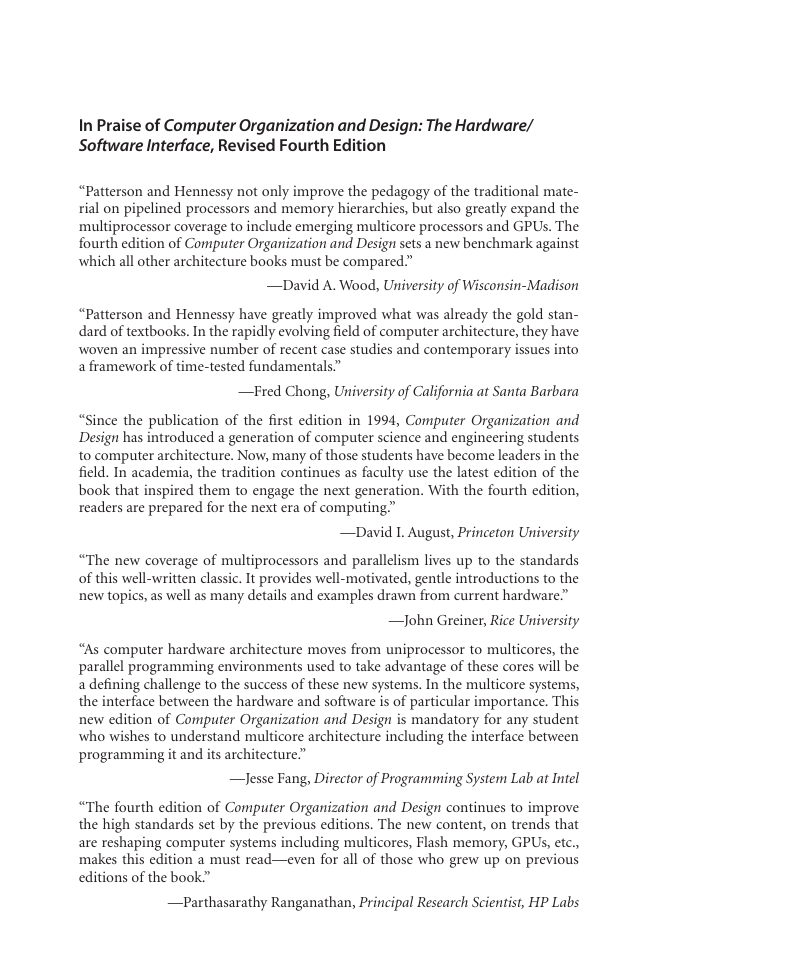

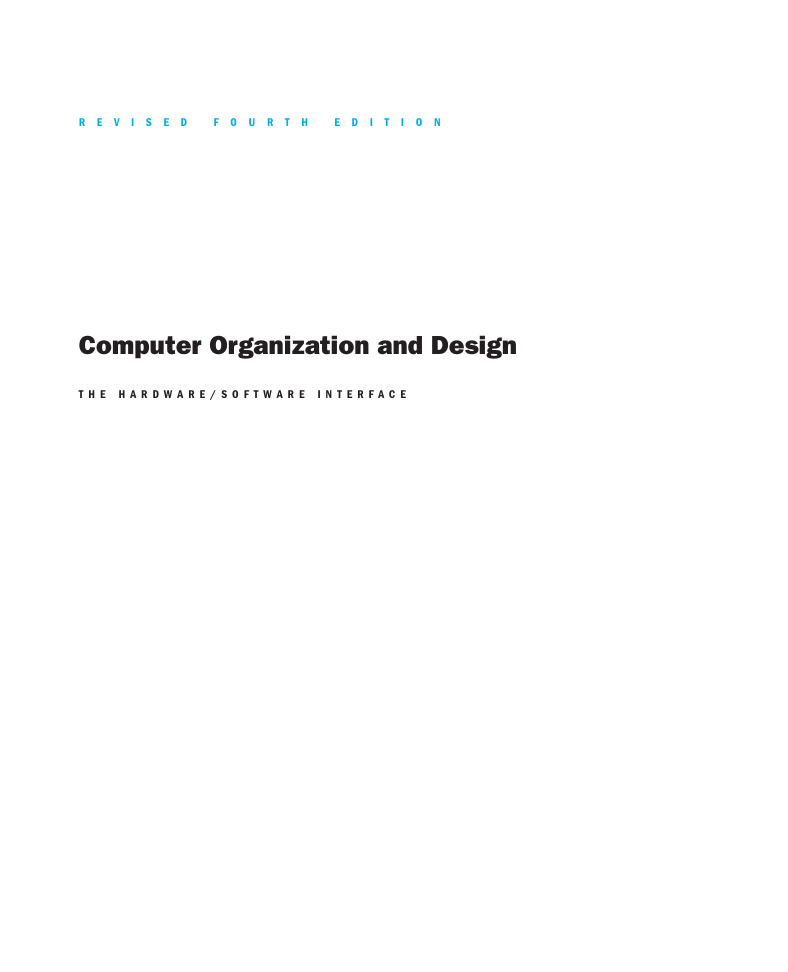
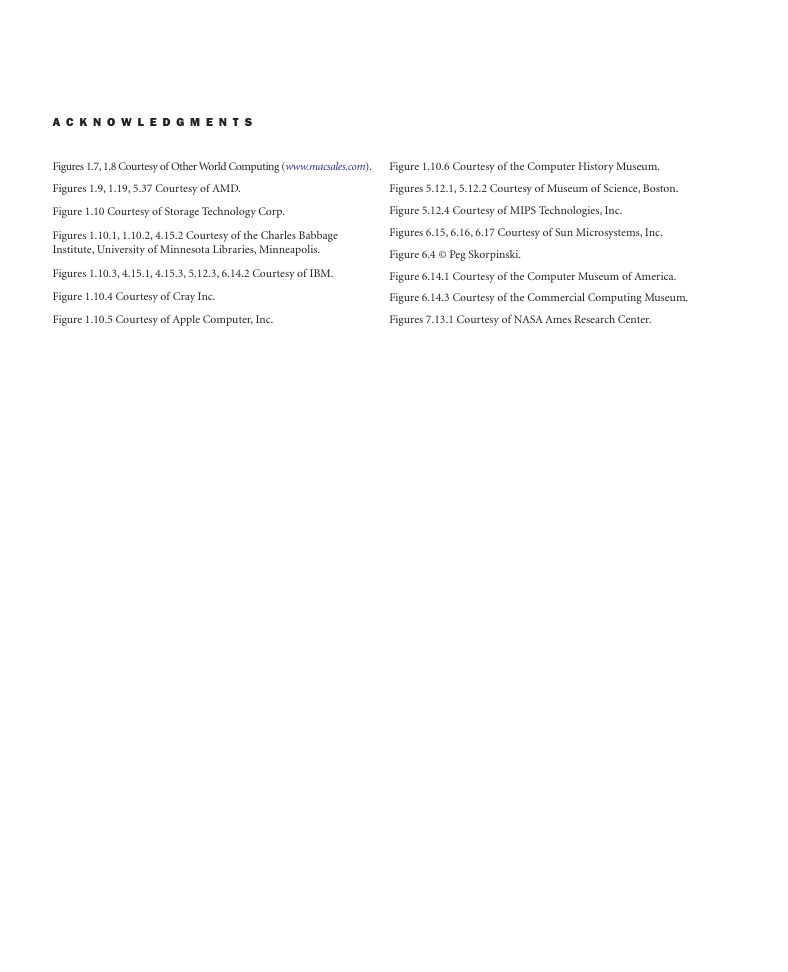
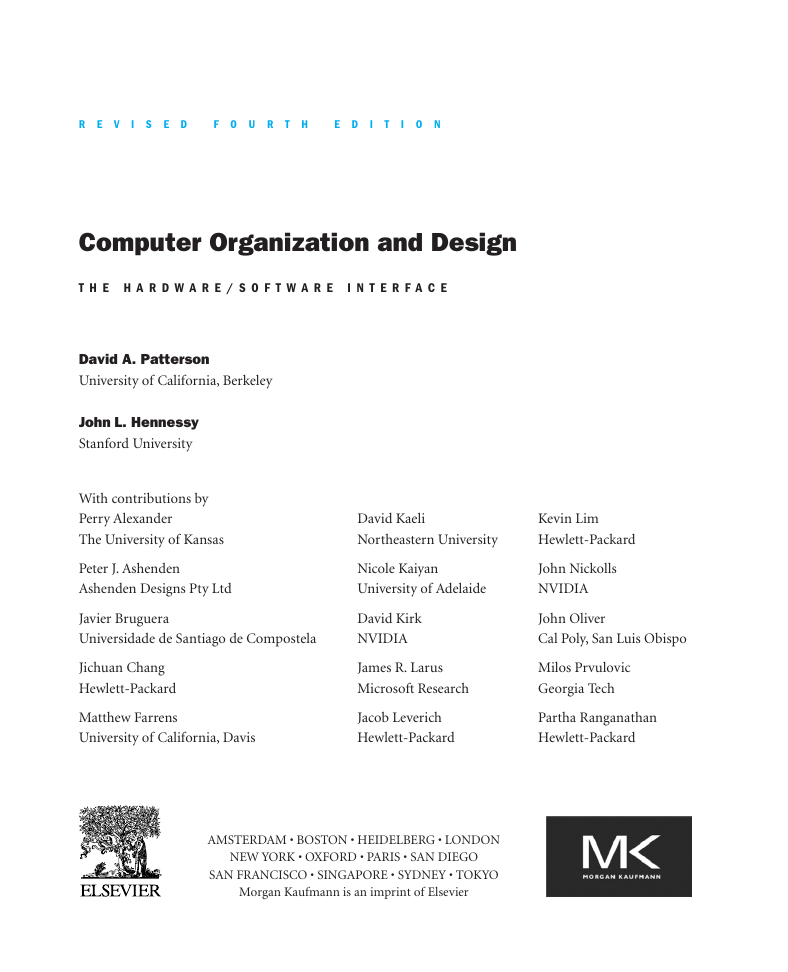
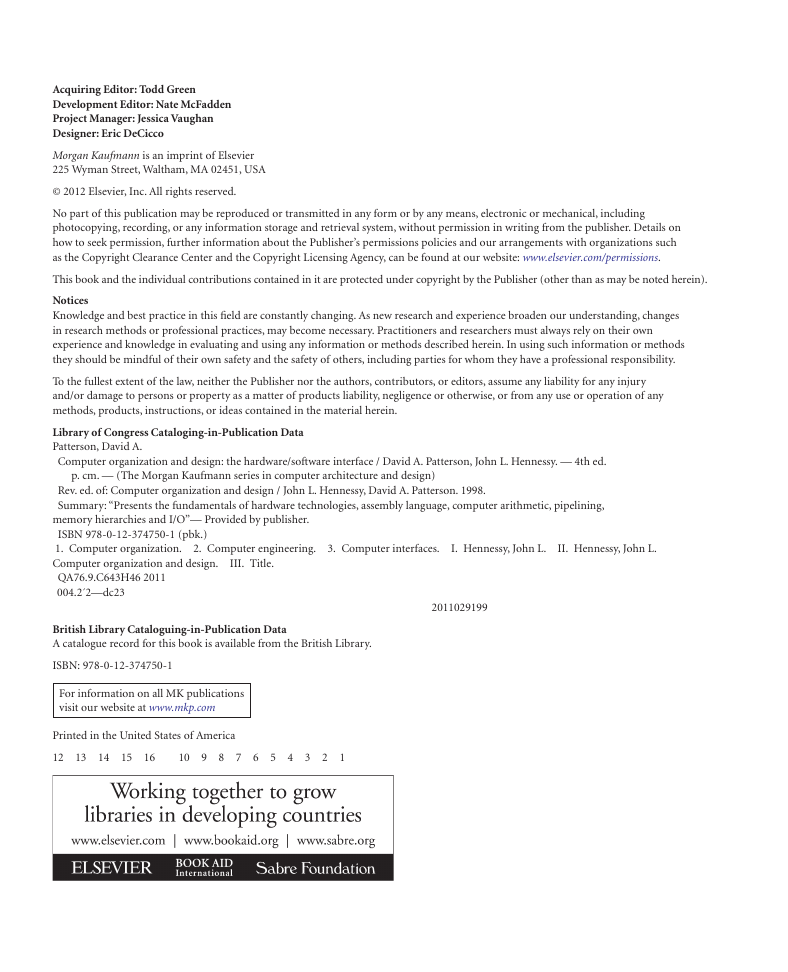









 2023年江西萍乡中考道德与法治真题及答案.doc
2023年江西萍乡中考道德与法治真题及答案.doc 2012年重庆南川中考生物真题及答案.doc
2012年重庆南川中考生物真题及答案.doc 2013年江西师范大学地理学综合及文艺理论基础考研真题.doc
2013年江西师范大学地理学综合及文艺理论基础考研真题.doc 2020年四川甘孜小升初语文真题及答案I卷.doc
2020年四川甘孜小升初语文真题及答案I卷.doc 2020年注册岩土工程师专业基础考试真题及答案.doc
2020年注册岩土工程师专业基础考试真题及答案.doc 2023-2024学年福建省厦门市九年级上学期数学月考试题及答案.doc
2023-2024学年福建省厦门市九年级上学期数学月考试题及答案.doc 2021-2022学年辽宁省沈阳市大东区九年级上学期语文期末试题及答案.doc
2021-2022学年辽宁省沈阳市大东区九年级上学期语文期末试题及答案.doc 2022-2023学年北京东城区初三第一学期物理期末试卷及答案.doc
2022-2023学年北京东城区初三第一学期物理期末试卷及答案.doc 2018上半年江西教师资格初中地理学科知识与教学能力真题及答案.doc
2018上半年江西教师资格初中地理学科知识与教学能力真题及答案.doc 2012年河北国家公务员申论考试真题及答案-省级.doc
2012年河北国家公务员申论考试真题及答案-省级.doc 2020-2021学年江苏省扬州市江都区邵樊片九年级上学期数学第一次质量检测试题及答案.doc
2020-2021学年江苏省扬州市江都区邵樊片九年级上学期数学第一次质量检测试题及答案.doc 2022下半年黑龙江教师资格证中学综合素质真题及答案.doc
2022下半年黑龙江教师资格证中学综合素质真题及答案.doc